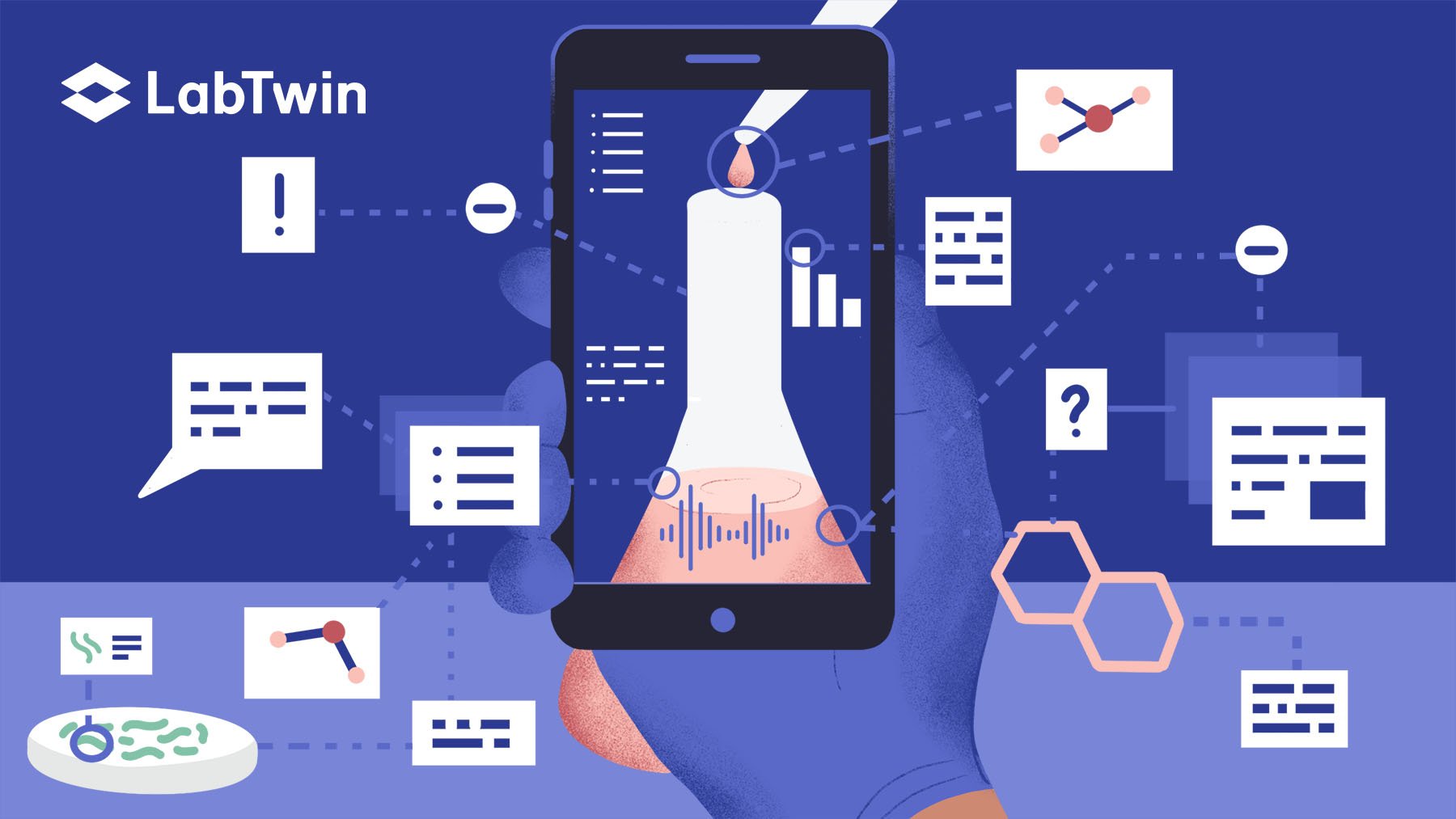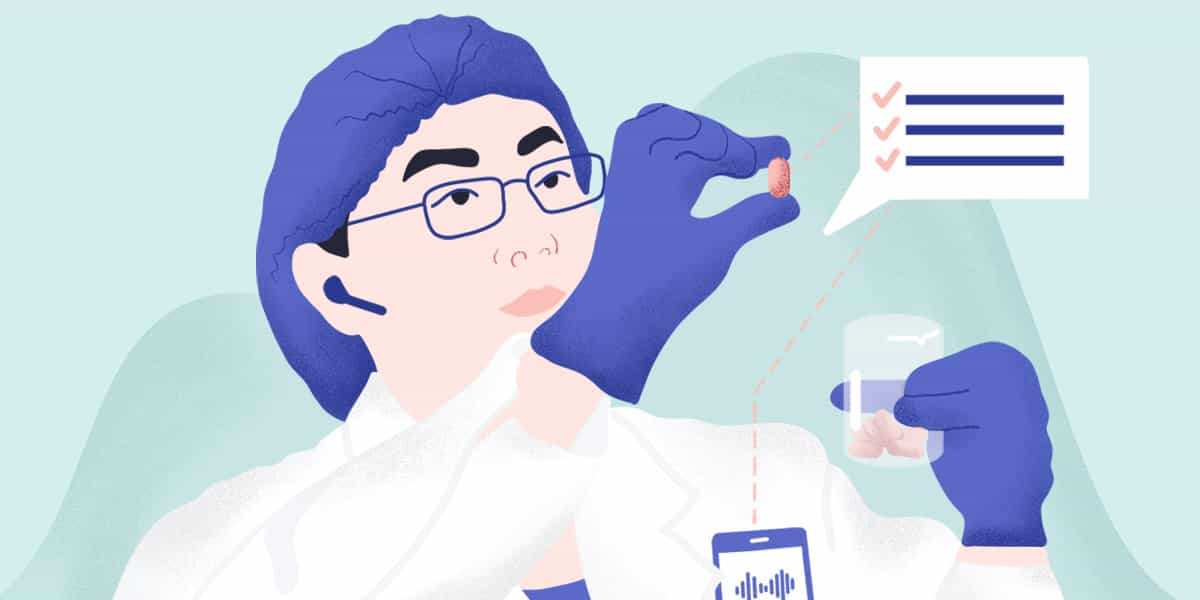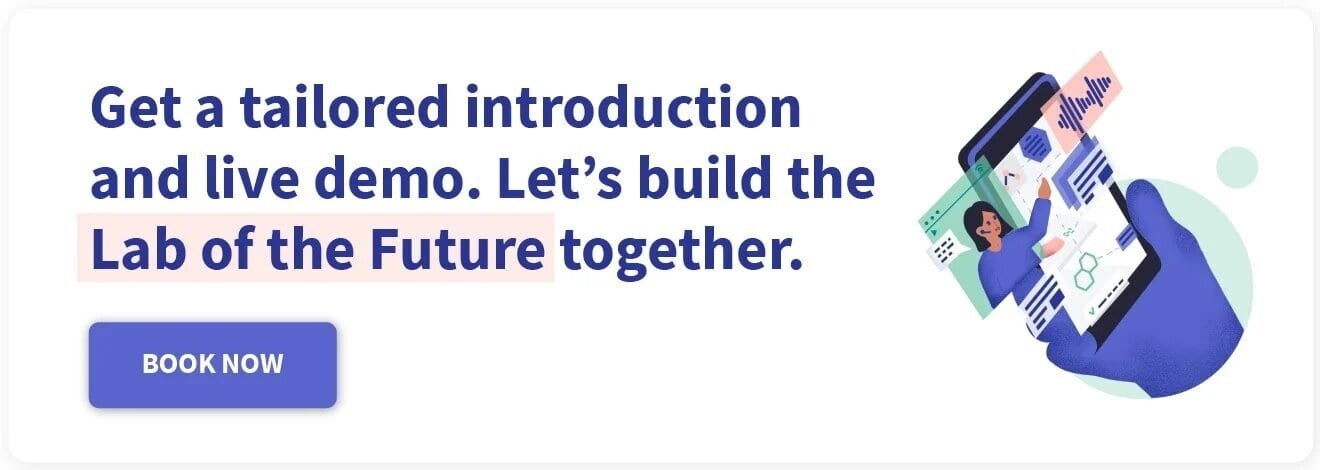In recent years, the reproducibility of scientific research has come under the spotlight. A major barrier to clinical development is the inability of translational scientists to replicate early discovery findings. In 2016, Nature surveyed nearly 1,600 scientists and found that 70 percent of experiments were not reproducible. This not only represents lost research dollars but also missed opportunities to develop and commercialize life-saving treatments.
Many factors make scientific research challenging to reproduce, but a frequent (and preventable) reason is poor documentation. A missing reagent, incorrect data entry, bad handwriting, and overall poor notetaking are all precursors to an irreproducible experiment or protocol deviation. Human error is unavoidable (even for scientists), especially when conducting multiple experiments at once with different instruments.
Ironically, today’s scientists have access to some of the most sophisticated technology to accelerate research and clinical development, yet they still use outdated methods to take notes and record data.
Scientists need better methods of data capture and access to achieve the Lab of the Future.
LabTwin, an emerging lab informatics company, is pioneering artificial intelligence (AI)-backed technology to address this unmet need. Their flagship product is an AI and voice-enabled digital lab assistant capable of optimizing scientists’ workflows at every stage of research and development.
This white paper covers six key benefits of voice-activated digital lab assistants.
“We’re still using pen and paper, we’re still using outdated
systems... and we’re not fully taking advantage of all of the
different types of data that we’re generating in the laboratory.”
Alok Tayi
Vice President of Life Sciences, Egnyte

IMPROVE NOTETAKING AND DOCUMENTATION IN REAL-TIME
Researchers often rely on a mix of electronic lab notebooks (ELNs), printed protocols, images, and post-it notes to capture, retrieve and record data. Managing these different data sources, while moving throughout the workplace, can be cognitively taxing for researchers, leading to incomplete or inaccurate documentation.
Almost 80% of surveyed lab staff believe that voice-powered digital lab assistants would be most useful for lab documentation or real-time data access. Digital lab assistants eliminate the need for paper-and-pen notetaking by leveraging voice-to-text software to take notes in real-time at the point of experimentation.
“Voice-to-text can be really useful in the lab to connect
scientists with their data. With LabTwin, when scientists are
at the bench, they can be 100 percent focused on running the
experiment, whether it is looking at a microscope or working
under a hood. All the scientist has to do is start vocalizing
what he or she is doing to capture all the information in real-time.”
Guru Singh
Head of Growth, LabTwin
STREAMLINE DATA ACCESS
Having real-time access to data is equally as important as real-time documentation. Scientists often work with multiple shared instruments or laboratory equipment. Therefore, access to raw data, especially legacy data, can be cumbersome.
“One of our LabTwin users, Philip, mentioned that he often has to make ten trips between his lab and his office just so he can access his data, such as buffer calculations,” says Guru Singh.
Additionally, there is a risk of losing complete datasets when transferring from one computer to another. Voice-enabled digital lab assistants can address this problem by providing real-time access to data from mobile devices or desktop computers.
By integrating lab informatics, databases and instruments, labs can improve data capture, save time and lower error rates.
“We are currently integrating LabTwin’s digital assistant with
legacy pharma software. This means that pharma scientists,
without leaving their lab, can access information from other
data sources and software, simply by using LabTwin.”
Guru Singh
Head of Growth, LabTwin
FACILITATE COLLABORATION
Scientific collaboration is becoming increasingly important for tackling complex research problems. However, collaboration is easier said than done. Scientists may encounter issues sharing and accessing data, especially if datasets are incomplete, in different formats or in different languages.
A voice-enabled digital lab assistant stores data in one central, secure place, controls user access and automatically tracks how data is viewed, edited and used. This makes it easy to share data with collaborators anywhere around the world while still complying with regulatory guidelines and keeping data secure. The Lab of the Future will not be limited by geographic location but will leverage new lab informatics tools to allow scientists to share data seamlessly.
This real-time access will enable scientists to troubleshoot problems on the spot or plan future experiments with potential collaborators. In a white paper by Pharma Intelligence and LabTwin, John Piccone, Principal at ZS Associates, said that digital lab assistants, “with the ability to learn from multiple scientists in different labs would be able to pick up on mistakes that should not be repeated or opportunities that should be seized under certain experimental conditions.”
ENSURE COMPLIANCE WITH GOOD LABORATORY PRACTICE
In today’s highly regulated industry, adherence to good laboratory practice (GLP) is essential. Failure to follow standard operating procedures (SOPs) and protocols often leads to inaccurate results.
Just as a digital lab assistant can facilitate data sharing, this technology can be leveraged to ensure strict regulatory compliance across all procedures. For example, the platform could be programmed to ensure scientists follow protocols in a stepwise fashion.
“If step one is to wear gloves, step two will not be activated until a researcher scans the glove box and puts the gloves on. I think augmented reality will empower researchers to adhere to SOPs, which is essential in the GxP environment,” says Guru Singh.
LabTwin’s voice-activated digital lab assistant can talk scientists through protocols. It also comes with features such as audit trails, electronic signatures, timestamps, and more. Thanks to complete data traceability, users can readily access historical data to support regulatory filings.
ACCESS INTEGRATED ASSISTANCE
Scientists already have dozens of lab informatics tools at their disposal to optimize their workflows. However, it takes time and energy to switch between different tools. Voice assistants solve this problem by integrating with existing lab informatics tools so researchers can control multiple platforms through one user-friendly interface. Furthermore, digital lab assistants are continuing to expand capabilities.
In other words, in the Lab of the Future, digital lab assistants may be able to monitor a scientist’s experiment in real-time, perhaps warning them if technical issues arise. Eventually, the digital assistant could provide troubleshooting tips or recommend future experiments based on current findings.
“We believe that, in the near future, voice-powered digital
lab assistants will be able to provide smart recommendations
to scientists, based on published data and internal lab data.”
Guru Singh
Head of Growth, LabTwin
ADAPT ACROSS DISCIPLINES, THERAPEUTIC AREAS AND RESEARCH STAGES
One of the greatest advantages of machine learning and AI-backed technology is its versatility across different disciplines, therapeutic areas, and stages of research.
Whether it’s a research team at an academic institution or scientists at a big pharmaceutical company working with animals, dangerous chemicals or pathogens, a voice-activated digital lab assistant can help lower error rates, improve reproducibility and ultimately shorten product development timelines.
“Feed the application with as much data as possible, which
helps it get better and better. If you use lab-related
wording, the application becomes the perfect assistant in
your field of technology or your field of research.”
Thomas Henseler
Digital Strategist, Microsoft

CONCLUSION
Considering the immense cost of research programs, a 70 percent irreproducibility rate is unacceptable. Some of the key causes of irreproducibility (poor notetaking, bad handwriting, missing information and so on) are easily preventable with next-generation lab informatics tools.
A voice-activated digital lab assistant can improve reproducibility and translatability across all areas of scientific research. LabTwin’s flagship product holds great promise for the Labs of the Future around the world.
To hear more insights from Alok Tayi, Oscar Kox, Thomas Henseler and Guru Singh, watch this free webinar. This white paper was created in collaboration with XTalks and written by Candice Tang, MSc.



